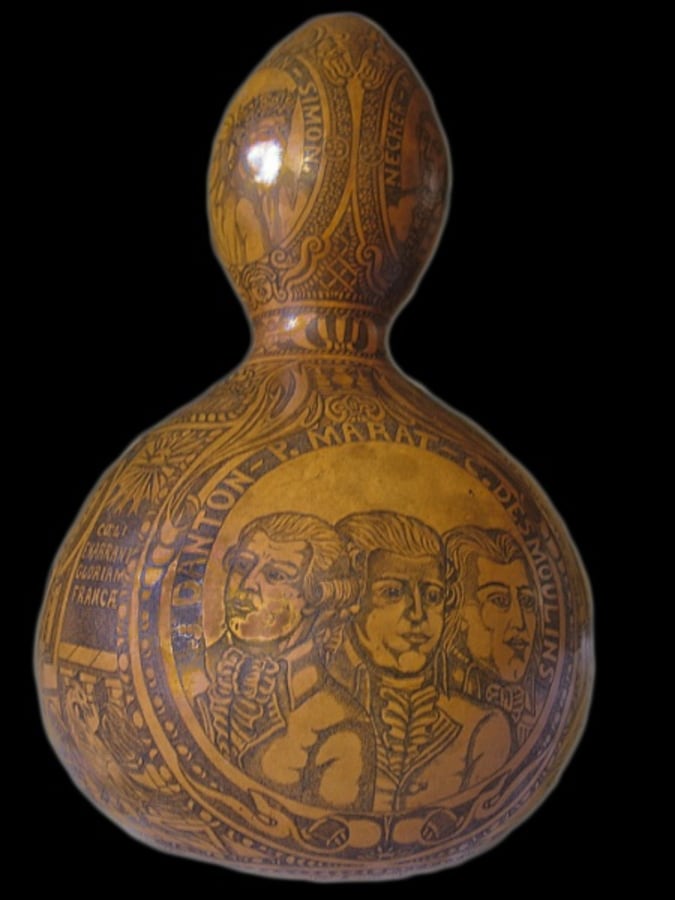It was common at executions of notable personages to attempt to get a momentum of the macabre event. Naturally, this was also the case with Louis XVI's case. A surviving report tells of how some spectators pushed to the front and dipped their handkerchiefs in the blood of the fallen monarch. Allegedly, one such handkerchief survived which belonged to Maximilien Bourdaloue. He kept the scrap of fabric in a gourd with the inscription "blood of Louis XVI, after his beheading".
The handkerchief itself has not survived but traces of blood within the blood made it possible to run DNA tests. Early on, it was found that the blood could very well have been Louis'. One of the main arguments in favour of the authenticity of the blood is the presence of a rare Y-chromosome. Henri IV's head provided a DNA reference which showed that Henri had had the rare Y-chromosome. Louis XVI was Henri's descendant (7 generations) and the sample showed traces of the same rarity. However, tests carried out in 2013 showed that the mummified head might not have been that of Henri IV at all - rendering it irrelevant in connection with identifying the blood in the gourd.
 |
| The gourd |
The scientific team involved determined that the sample was most likely to have originating from a person with brown eyes. Louis XVI - on the other hand - had blue eyes. As it happens, Professor Lalueza-Fox considers the possibility of the owner of the blood to have had blue eyes to be between 2.4 - 3 %.
Furthermore, the test was able to conclude that the 76 % of the deceased's ancestry came from northern Italy. Louis' primary ancestry was French, Polish and German. Louis XVI was said to have been remarkably tall for his age at 185 cm. Yet, the person whose blood was tested was just a little taller than the average male which would have made him little more than 167 cm.
So, while the blood is unlikely to have been that of the dethroned king, it is still likely that it did come from a person beheaded by guillotine during the French Revolution. Thousands of people were beheaded and the scaffold was not wiped down afterwards. It is possible that the blood belonged to someone beheaded before the king. However, it is also possible that the blood had nothing to do with the guillotine. It has been suggested that Maximilien Bourdaloue might have deliberately lied.


